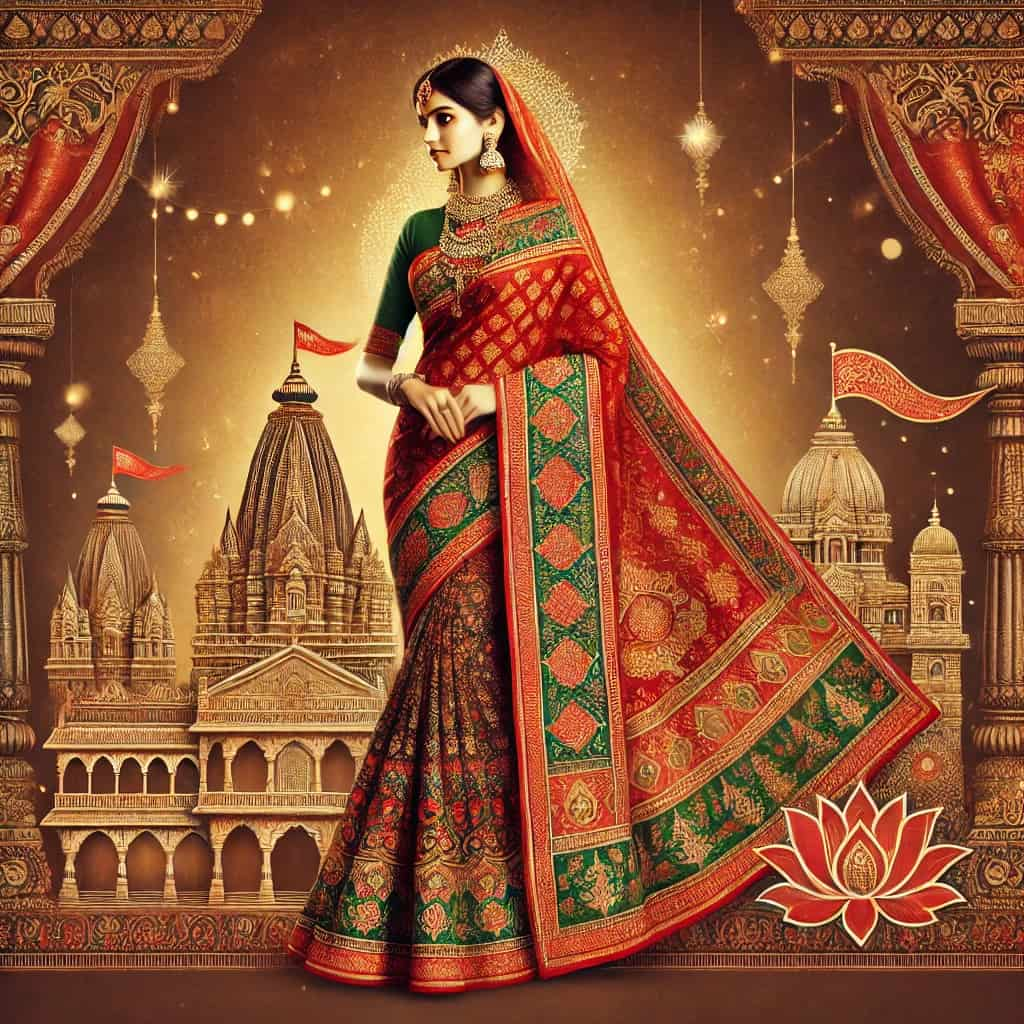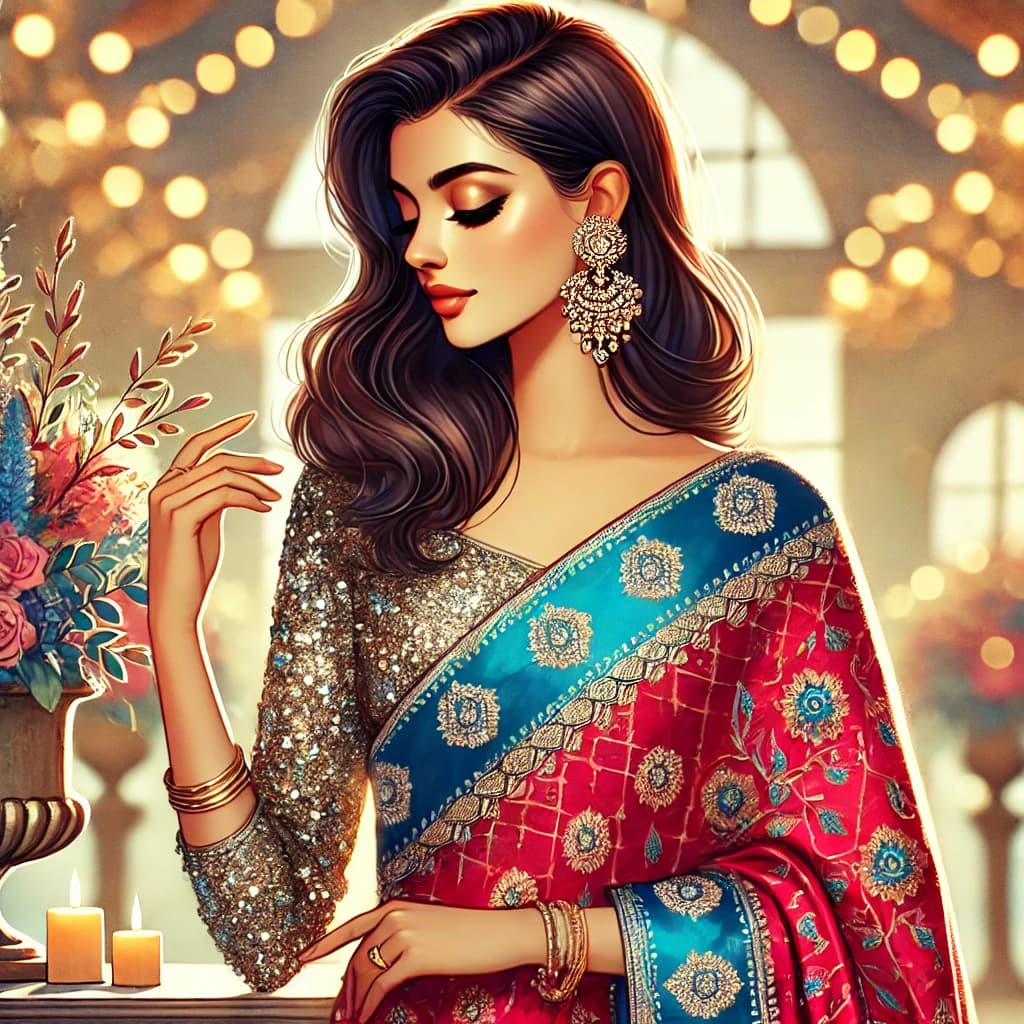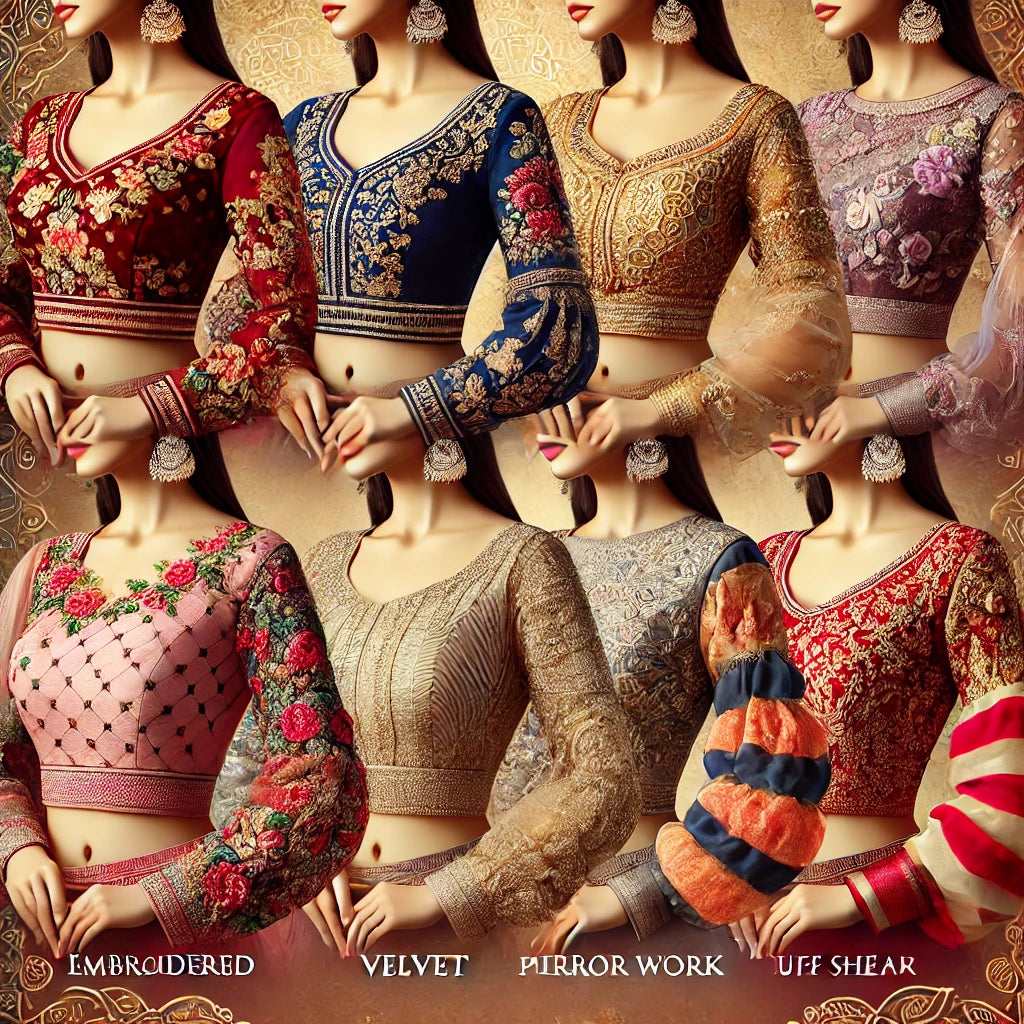
The Timeless Beauty of Maharashtra Sarees: Tradition, Types, and Styling Tips
Maharashtra sarees are a living testament to the rich culture and history of the state. Whether it’s the famous Paithani saree known for its intricate zari work or the iconic Nauvari saree worn in traditional Maharashtrian style, these sarees continue to charm women across India and beyond. Their blend of elegance and tradition has made them a must-have in any saree lover’s wardrobe. In this blog, we’ll take you on a journey through the different types of Maharashtra sarees, their cultural significance, and how you can style them for both traditional and contemporary looks.
Types of Maharashtra Sarees
Maharashtra sarees are incredibly diverse, each originating from a different part of the state and holding a unique place in the cultural fabric. Here are some of the most iconic types:
#1. Paithani Saree
The Paithani saree is perhaps the most well-known saree from Maharashtra. Known as the “Queen of Silks,” it is famed for its vibrant colors, intricate handwoven zari borders, and pallu with peacock motifs. Traditionally made from pure silk, Paithani sarees have been a symbol of luxury and heritage for centuries.
#2. Nauvari Saree
The Nauvari saree, also called the “Kasta” saree, is unique because of its draping style. Unlike the typical six-yard saree, the Nauvari is nine yards long, and the drape resembles trousers, making it easier for women to move freely. This saree is deeply rooted in Maharashtra’s traditional culture and is often worn during festivals and weddings.
#3. Kolhapuri Saree
Kolhapuri sarees are simple, lightweight, and perfect for daily wear or smaller festive occasions. Their understated elegance and comfort make them a favorite among women who want to balance tradition with practicality.
#4. Narayan Peth Saree
Originating from the town of Narayan Peth, these sarees are known for their contrasting borders, typically red or black with fine gold zari work. They are known for their sturdy texture and bright colors, making them a popular choice for religious ceremonies and festivals.
Cultural Significance of Maharashtra Sarees
Each type of Maharashtra saree carries with it a deep cultural and traditional significance. These sarees are more than just pieces of clothing; they are a reflection of the state’s vibrant history and craftsmanship.
- Heritage of Handloom: Maharashtra sarees like the Paithani are woven using age-old techniques passed down through generations. Each saree is a labor of love, often taking months to complete due to its intricate design and handwoven nature.
- Symbol of Tradition: Whether it’s a wedding, religious festival, or cultural event, wearing a saree from Maharashtra is a mark of respect for tradition. Sarees like the Nauvari are especially important during Maharashtrian weddings and rituals, symbolizing grace, strength, and heritage.
How to Style Maharashtra Sarees
Maharashtra sarees are versatile and can be styled in multiple ways to suit different occasions. Whether you're looking for a traditional look or a modern twist, these sarees offer endless possibilities.
Traditional Look
For a traditional Maharashtrian look, drape a Nauvari saree and pair it with the classic Maharashtrian jewelry like the Nath (nose ring), green bangles, and a traditional pearl necklace known as the "Chinchpeti." Finish the look with a bindi and Kolhapuri chappals to fully embrace the cultural aesthetic.
Contemporary Fusion
If you want to give your Paithani saree a modern twist, pair it with a contemporary blouse—think cold shoulder or high-neck designs. You can also cinch your saree at the waist with a belt for a fusion look that’s perfect for weddings or festive events. Opt for minimal jewelry to let the saree take center stage.
Festive Occasions
Kolhapuri and Narayan Peth sarees are excellent for smaller festive occasions. You can accessorize with a lightweight necklace, earrings, and a simple bindi to achieve an elegant yet understated look.
Where to Buy Authentic Maharashtra Sarees
Finding authentic Maharashtra sarees can be tricky, but with the rise of online shopping, you no longer need to travel to Maharashtra to get your hands on these beautiful sarees. Reputed online stores like TrendOye offer a variety of Maharashtra sarees, including Paithani, Nauvari, and Narayan Peth sarees, crafted by skilled artisans.
- Rawnut Saree Collection: Explore the vibrant and exquisite collection of Maharashtra sarees at Rawnut's store, offering high-quality sarees that embody tradition and modern elegance.
- Online Shopping at TrendOye: At TrendOye, we offer a curated selection of authentic Maharashtra sarees, perfect for every occasion. Whether you're looking for a Paithani saree for a wedding or a Nauvari saree for a festival, we have something for everyone.
Conclusion
Maharashtra sarees are a timeless piece of attire that not only adds grace to your look but also connects you with the rich cultural heritage of India. From the luxurious Paithani to the iconic Nauvari, these sarees offer something for everyone, no matter your style preference. Whether you want a traditional look for a wedding or a contemporary twist for a festive event, Maharashtra sarees are versatile and effortlessly chic.
If you’re looking to purchase authentic Maharashtra sarees, visit TrendOye to explore our collection and add a piece of Maharashtra’s rich culture to your wardrobe today!
FAQs
Q1: What is the difference between a Paithani and a Nauvari saree?
A: A Paithani saree is a six-yard saree known for its rich silk and zari work, while a Nauvari saree is a nine-yard saree draped in a unique Maharashtrian style, ideal for traditional events.
Q2: Can I wear a Maharashtra saree for modern events?
A: Absolutely! You can style your Maharashtra saree with modern blouses, belts, or minimalistic jewelry to create a fusion look that’s perfect for contemporary events.
Q3: Where can I buy authentic Maharashtra sarees online?
A: You can buy authentic Maharashtra sarees from reputed stores like TrendOye, which offers a wide range of traditional sarees crafted by skilled artisans.



Leave a comment
This site is protected by hCaptcha and the hCaptcha Privacy Policy and Terms of Service apply.